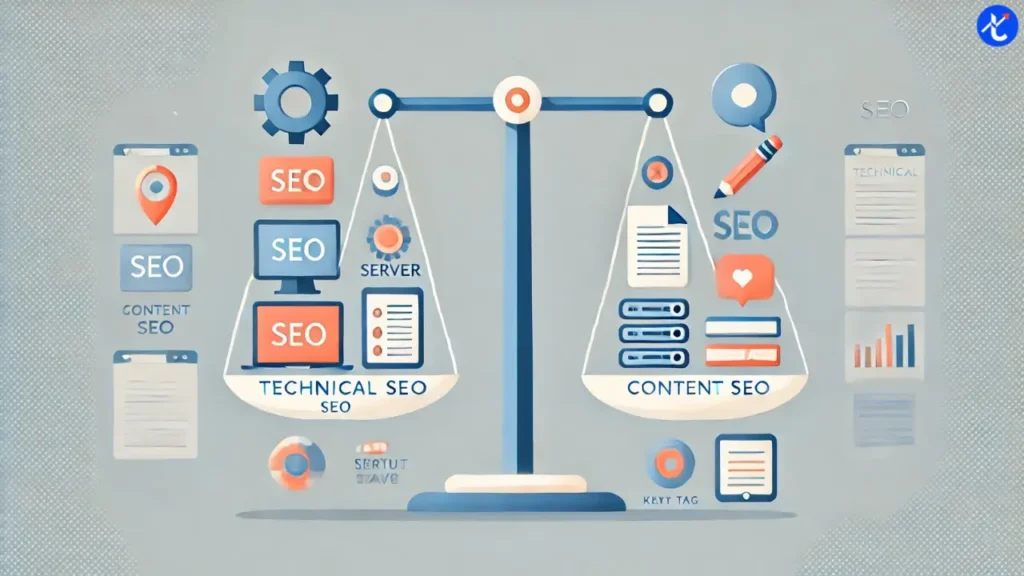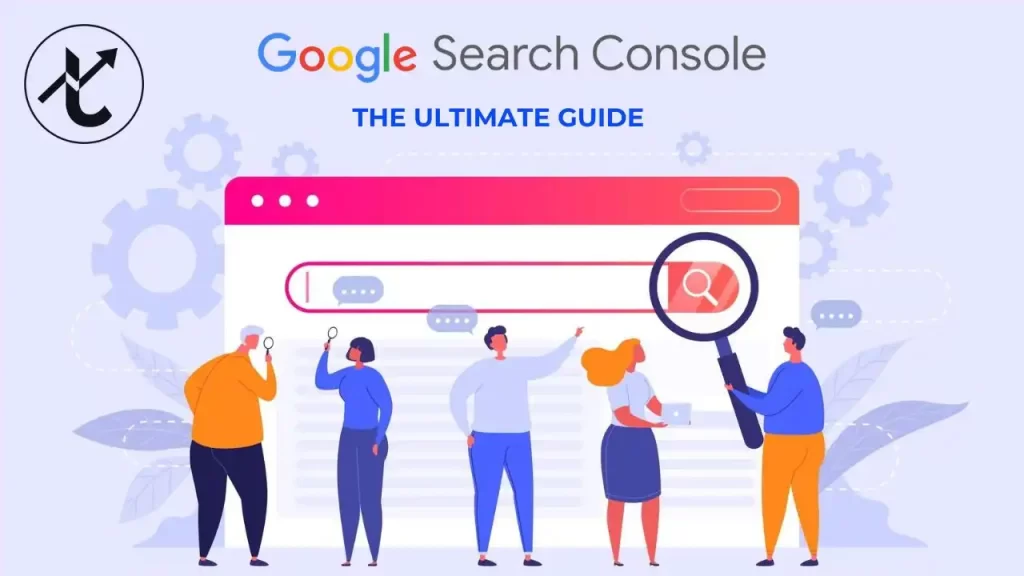Struggling to boost your website’s SEO performance ranking? The key lies in finding the perfect balance between technical SEO vs content SEO. Both are crucial for success, but they work in different ways. Technical SEO focuses on site speed and structure, like Core Web Vitals vs keywords, while content SEO is all about content quality vs page speed. In this blog, I’ll share six simple tips to master both, using an SEO checklist 2025 to skyrocket your rankings. Let’s dive in and find that sweet spot!
Understanding Technical SEO vs Content SEO
Before we jump into the tips, let’s break down technical SEO vs content SEO. Technical SEO is like the foundation of a house—it makes sure your website runs smoothly, loads fast, and is easy for search engines to crawl. Think Core Web Vitals, mobile-friendliness, and site structure. Content SEO, on the other hand, is the decor—it’s about creating high-quality, keyword-rich content that engages users.
Both are vital for SEO performance ranking in 2025. A fast site with poor content won’t rank well, and great content on a slow site won’t either. Balancing content quality vs page speed and Core Web Vitals vs keywords is the secret to success. Here’s how to do it!
Prioritize Core Web Vitals for Technical SEO
Core Web Vitals are Google’s way of measuring user experience, and they’re a big deal for technical SEO vs content SEO. These metrics—Largest Contentful Paint (LCP), First Input Delay (FID), and Cumulative Layout Shift (CLS)—focus on speed, interactivity, and visual stability. In 2025, they’re key to SEO performance ranking.
To optimize Core Web Vitals:
- Improve page speed with tools like Google PageSpeed Insights.
- Compress images and use modern formats like WebP.
- Minimize JavaScript to reduce delays.
- Ensure your site is mobile-friendly.
By nailing Core Web Vitals vs keywords, you’ll create a smooth experience that boosts your technical SEO. Add this to your SEO checklist 2025 for a strong start!
Focus on High-Quality Content for Content SEO
While technical SEO keeps your site running, content SEO brings it to life. Content quality vs page speed is a balancing act, but quality content is non-negotiable. Search engines love content that’s relevant, engaging, and packed with the right keywords.
Here’s how to boost your content SEO:
- Research keywords using tools like Ahrefs or Google Keyword Planner.
- Write clear, helpful articles that answer user questions.
- Use headings, bullet points, and short paragraphs for readability.
- Update old content to keep it fresh and relevant.
High-quality content paired with a fast site (thanks to technical SEO) ensures better SEO performance ranking. Focus on Core Web Vitals vs keywords by weaving keywords naturally into your content without sacrificing quality.
Optimize Page Speed to Bridge Technical and Content SEO
Content quality vs page speed is a common debate in technical SEO vs content SEO. A beautiful, keyword-rich blog post won’t rank if it takes forever to load. In 2025, users expect sites to load in under two seconds, and Google rewards fast sites with higher rankings.
To improve page speed:
- Use a Content Delivery Network (CDN) to speed up global access.
- Enable browser caching to reduce load times for returning visitors.
- Minify CSS and HTML files to streamline code.
- Host videos externally (like on YouTube) to avoid slowing your site.
Fast page speed supports your content SEO by keeping users engaged, boosting SEO performance ranking. Add speed checks to your SEO checklist 2025 to stay on top!
Use Keywords Strategically to Blend Content and Technical SEO
Keywords are the heart of content SEO, but they also play a role in technical SEO. For example, optimizing URL structures and meta tags with keywords improves crawlability, a technical SEO win. Balancing Core Web Vitals vs keywords means using keywords smartly without overloading your site.
Try these keyword tips:
- Place primary keywords in titles, headers, and the first 100 words.
- Use descriptive, keyword-rich URLs (e.g., /best-seo-tips-2025).
- Optimize meta descriptions to improve click-through rates.
- Avoid keyword stuffing—it hurts content quality and user experience.
A strategic keyword approach strengthens both technical SEO vs content SEO, driving better SEO performance ranking. Include keyword audits in your SEO checklist 2025 for consistent results.
Build a Mobile-Friendly Site for Technical SEO Success
In 2025, most users browse on mobile, making mobile-friendliness a must for technical SEO vs content SEO. Google uses mobile-first indexing, meaning it ranks your site based on its mobile version. A slow or clunky mobile site tanks your SEO performance ranking, no matter how great your content is.
To optimize for mobile:
- Use responsive design to adapt to all screen sizes.
- Test mobile usability with Google’s Mobile-Friendly Test tool.
- Simplify navigation for easy access on small screens.
- Ensure Core Web Vitals (like LCP and CLS) are optimized for mobile.
A mobile-friendly site supports content quality vs page speed by delivering a seamless experience, boosting both technical SEO and content SEO. Add mobile checks to your SEO checklist 2025!
Monitor and Adjust with an SEO Checklist 2025
Balancing technical SEO vs content SEO isn’t a one-time task—it requires ongoing effort. An SEO checklist 2025 helps you stay organized and track progress. Regularly monitor your SEO performance ranking to see what’s working and what needs tweaking.
Your SEO checklist 2025 should include:
- Monthly Core Web Vitals audits using Google Search Console.
- Weekly content updates to keep keywords fresh.
- Bi-weekly page speed tests with tools like GTmetrix.
- Quarterly backlink analysis to ensure quality links.
- Regular competitor research to stay ahead.
By tracking content quality vs page speed and Core Web Vitals vs keywords, you’ll fine-tune your strategy for maximum impact. Tools like SEMrush or Moz can simplify this process, ensuring your site thrives in 2025.
Bonus Tips for Mastering Technical SEO vs Content SEO
Want to go the extra mile? Here are a few more ways to balance technical SEO vs content SEO:
- Use structured data (schema markup) to enhance technical SEO and make content stand out in search results.
- Create content clusters around main topics to boost content SEO and site authority.
- Fix broken links and 404 errors to improve technical SEO and user experience.
- A/B test meta titles and descriptions to optimize content SEO click-through rates.
These extras will supercharge your SEO performance ranking and keep you ahead in 2025.
Final Thoughts on Technical SEO vs Content SEO
Finding the perfect balance between technical SEO vs content SEO is the key to dominating search rankings in 2025. By optimizing Core Web Vitals, creating high-quality content, improving page speed, using keywords wisely, ensuring mobile-friendliness, and following an SEO checklist 2025, you’ll set your site up for success. Start with one or two tips, track your SEO performance ranking, and build from there. With the right balance of content quality vs page speed and Core Web Vitals vs keywords, your website will soar to the top. Get started today and watch your rankings climb!




